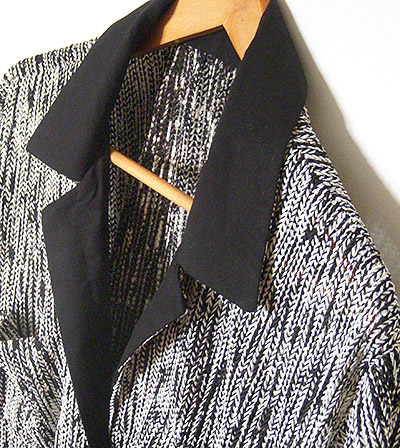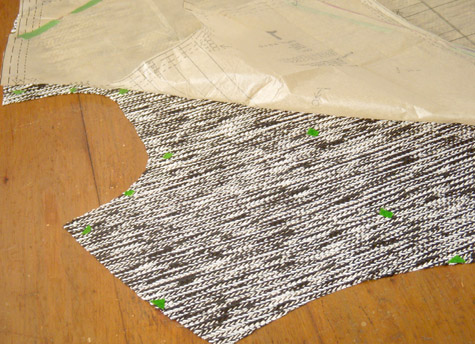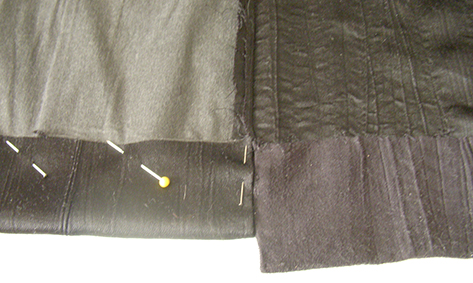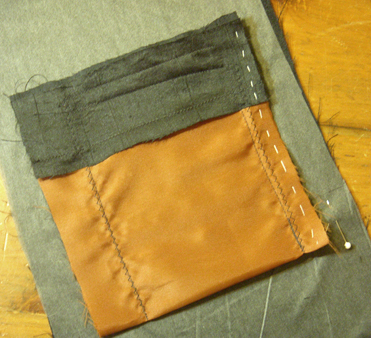This isn’t just a flat print of a knit. This material actually has a raised profile; it has the illusion of knitted ribbon!

Here is the Butterick B5218 blouse. I used solid black broadcloth on the collar to accent the main, mock-knit fabric.
Interesting, but a real challenge to send through my sewing machine. Consequently, I ended up hand-sewing some bits, such as pockets and sleeve hems. I just didn’t like the deep impression the machine stitches left on the material’s delightful terrain.
Once satisfied that the fabric would not fray, I left the seams unfinished (no worries). Unfortunately, the needle jammed and skipped, so I placed stiff, tearaway tissue on both top (against presser foot) and bottom (against feed dogs) and that sent it through smoothly.

It was impossible to chalk in pattern marks on such bumpy fabric. I ended up cutting shapes from painter’s tape instead.
In places where I did choose to hand-sew, for instance the sleeve hems, I marked a very straight path with pins, 5/8″ from edge, and followed that with close, even stitches. The pockets were also hand sewn in place. That was a longer path than the shoulders, but required less precision and the stitch length was longer. (Unless you plan to keep sand in your pockets, the seams need not be finished to micro-perfection.)

I narrowed the drop shoulders by cutting both front and back pieces diagonally from shoulder notch down to the armhole notch. Then I lapped the slice at shoulder.
In the end, I like the drape of my final blouse. All-season suitable, it combines a wintry, knitted look, minus the bulk.






